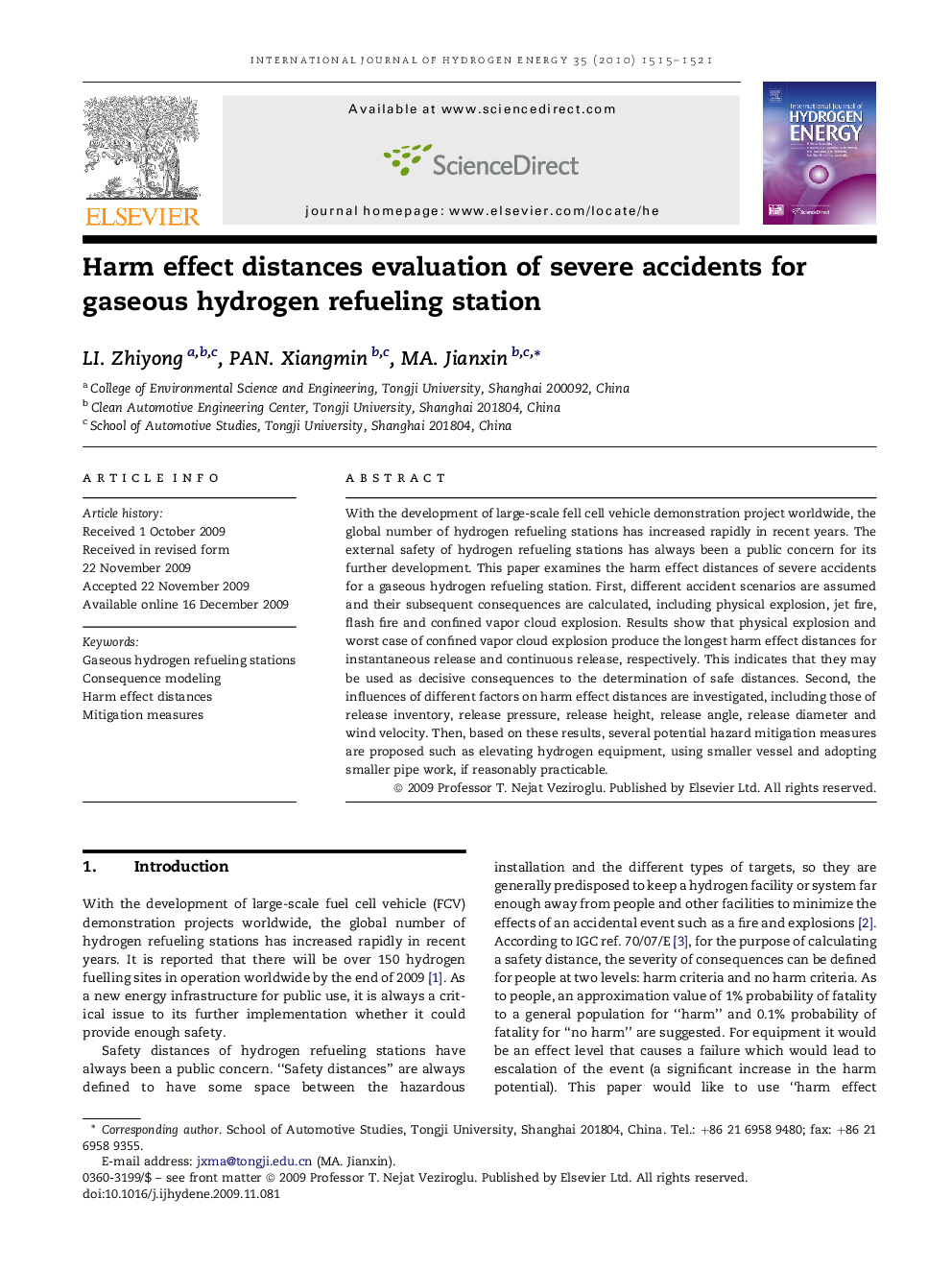| Article ID | Journal | Published Year | Pages | File Type |
|---|---|---|---|---|
| 1273546 | International Journal of Hydrogen Energy | 2010 | 7 Pages |
With the development of large-scale fell cell vehicle demonstration project worldwide, the global number of hydrogen refueling stations has increased rapidly in recent years. The external safety of hydrogen refueling stations has always been a public concern for its further development. This paper examines the harm effect distances of severe accidents for a gaseous hydrogen refueling station. First, different accident scenarios are assumed and their subsequent consequences are calculated, including physical explosion, jet fire, flash fire and confined vapor cloud explosion. Results show that physical explosion and worst case of confined vapor cloud explosion produce the longest harm effect distances for instantaneous release and continuous release, respectively. This indicates that they may be used as decisive consequences to the determination of safe distances. Second, the influences of different factors on harm effect distances are investigated, including those of release inventory, release pressure, release height, release angle, release diameter and wind velocity. Then, based on these results, several potential hazard mitigation measures are proposed such as elevating hydrogen equipment, using smaller vessel and adopting smaller pipe work, if reasonably practicable.
